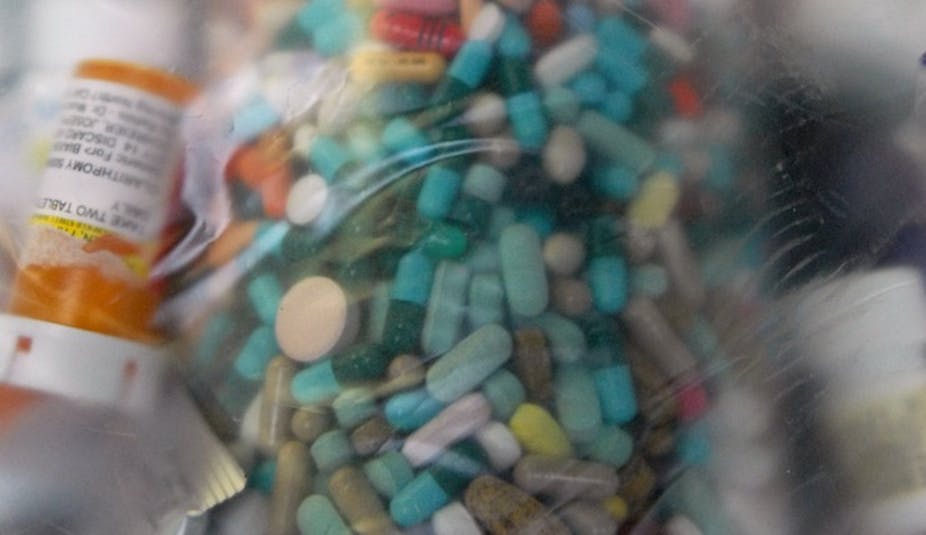In the next few days, 12 Pacific Rim countries will make critical decisions about what is potentially the most damaging trade agreement for public health ever signed.
The Trans Pacific Partnership agreement encompasses trade in goods and services and a range of other issues, such as intellectual property rights, and investment and financial services.
It includes Singapore, Malaysia, the United States, Australia, New Zealand, Brunei, Peru, Chile, Japan, Canada, Mexico and Vietnam. And it’s in the final throes of three years of negotiations.
In response to growing public outrage over some of the US proposals in the agreement, the US Trade Representative has offered a series of ostensible concessions to the poorest nations involved.
But while they’re been touted by the USTR as addressing some of the most stringent intellectual property parts of the deal, the proposals are, in fact, just more of the same bad medicine.
Excessive intellectual property
The next ministerial meeting for the Trans Pacific Partnership will be held in Singapore from Saturday December 7 to 10. There’s a push to conclude the deal by the end of the year so this will be a meeting where many final decisions could be made.
The negotiations were shrouded in secrecy until mid-November when Wikileaks published the leaked text of the Intellectual Property Rights Chapter of the agreement. The text confirms fears of US demands that will restrict market entry of affordable generic medicines.
The leaked chapter includes a range of proposals.
It calls for patents for new uses of existing drugs. If a new use is found for an old drug that’s out of patent, the drug can be granted a new patent.
It seeks clinical trial data exclusivity, which prohibits generic medicines companies from using that data to register drugs for five years. And it wants mandatory patents on most medical, surgical, and diagnostic procedures, which will increase their cost.
These are only some of the US intellectual property demands, and they far exceed the World Trade Organization (WTO) rules governing patent protection enshrined in the 1994 Trade Related Aspects of Intellectual Property Rights (TRIPS).
Denying the downtrodden
Although they collectively account for about 40% of the world’s GDP, the 12 countries party to the agreement have vast differences in average income and national wealth.
A consistent criticism of the US proposals on intellectual property has been the disproportionate impact the agreement will have on developing nations, whose citizens already struggle to pay for health care and medicines.
Vietnam, for instance, has the lowest average income of the 12 negotiating countries, and already pays very high prices for medicines.
Vietnamese people pay 72% of all medicine costs, and medicines for serious diseases such as heart disease, cancer and hepatitis C, remain out of reach for many because they are simply too expensive.
Other free trade agreements with similar intellectual property provisions negotiated have resulted in escalating medicine prices.
Indeed, an Oxfam study found medicine prices in Jordan increased by 20% following the 2001 US-Jordan Free Trade Agreement. This increase has resulted in 25% of the nation’s health ministry budget being spent on medicines alone.
Not really concessions
In response, to public pressure and concern about the extent of US demands around intellectual property in the leaked text, the United States Trade Representative (USTR) has proposed several intellectual property policy changes.
The main proposal is to allow developing countries to comply with higher levels of intellectual property protection only when they have reached a per capita average national income US$12,616.
It has been described by US professor of law, Brook Baker as offering a:
modest temporary respite at best from only a small fraction of U.S. demands.
Baker notes that Malaysia and Mexico’s average income falls just short of this threshold. And Peru and Vietnam are the only two countries whose average income fall well below the mark.
What’s more, this USTR proposal is only offered to low-income countries temporarily; they will have to provide extended patent protection once average national income reaches US$12,616.
So while this may appear to be a compromise that offers some reprieve, it (still) effectively locks all countries into some of the worst intellectual property provisions ever adopted in a trade agreement. And it reduces access to medicines on an unprecedented scale.
The worst part of the whole deal is that the most vulnerable people in developing countries will be the ones to bear the greatest burden of these proposed measures.
At the negotiating table this weekend, Australia should take the lead in rejecting this new USTR proposal and indeed all provisions that seek to increase intellectual property protection beyond what is already required by the WTO.

